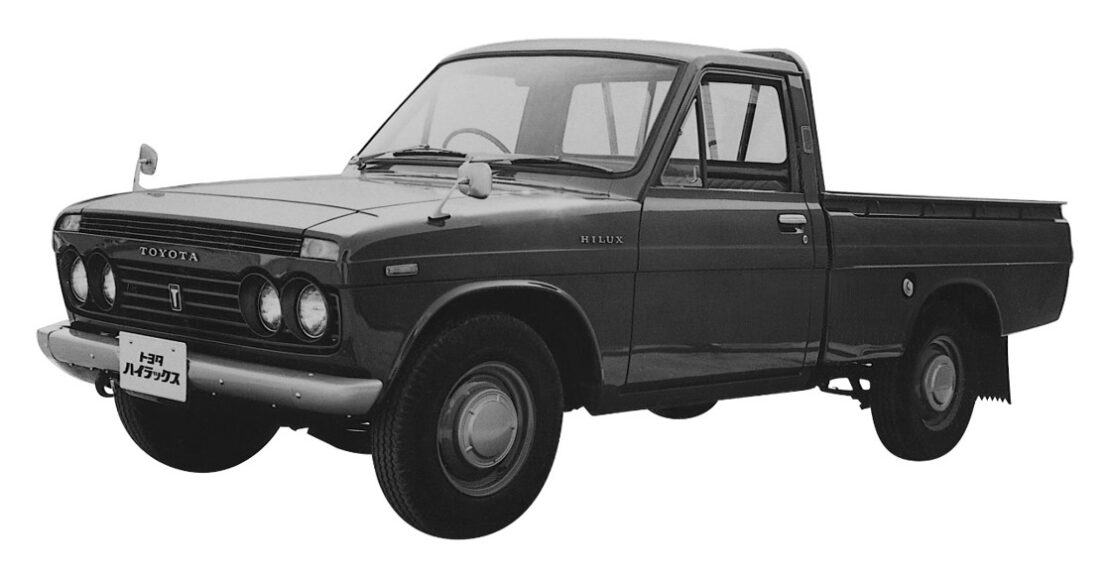The heritage of Toyota Hilux
Hilux is derived from the words “high” and “luxury.”
The Toyota Hilux is a series of compact pickup trucks that has been in production since 1968. Over the
years, the Hilux has undergone several generational changes, with each new iteration bringing improvements in performance, comfort, and safety features. Here’s a brief history of the Toyota Hilux
and the milestones that mark each generation:
First Generation (1968-1972):
The Toyota Hilux was introduced in 1968 as a compact pickup truck.
It had a 1.5-liter engine that produced 77 horsepower. The first-generation Hilux was available in either a two-door or four-door configuration. In 1971, a long-bed version was introduced.
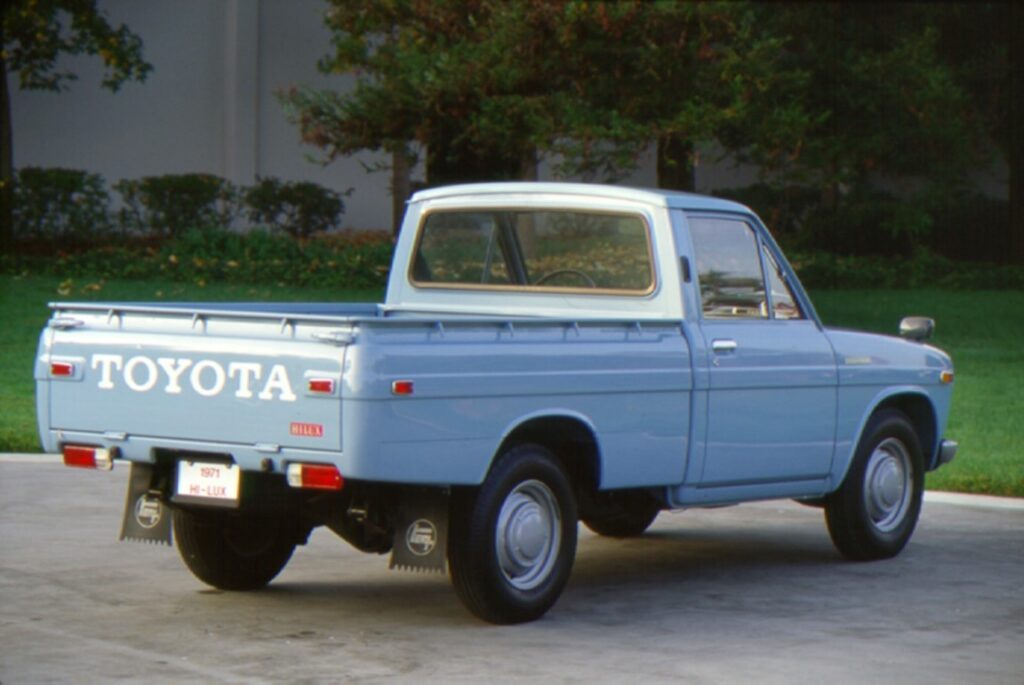
Second Generation (1972-1978):
The second-generation Hilux was introduced in 1972.
It had a more powerful 2.0-liter engine that produced 108 horsepower. The Hilux was now available with an optional automatic transmission. In 1975, the first Hilux pickup truck was produced in the United States.

Third Generation (1978-1983):
The third-generation Hilux was introduced in 1978.
It had a more modern design and was larger than its predecessors. The engine was upgraded to a 2.4-liter engine that produced 97 horsepower. In 1981, Toyota introduced a turbocharged diesel engine for the Hilux.
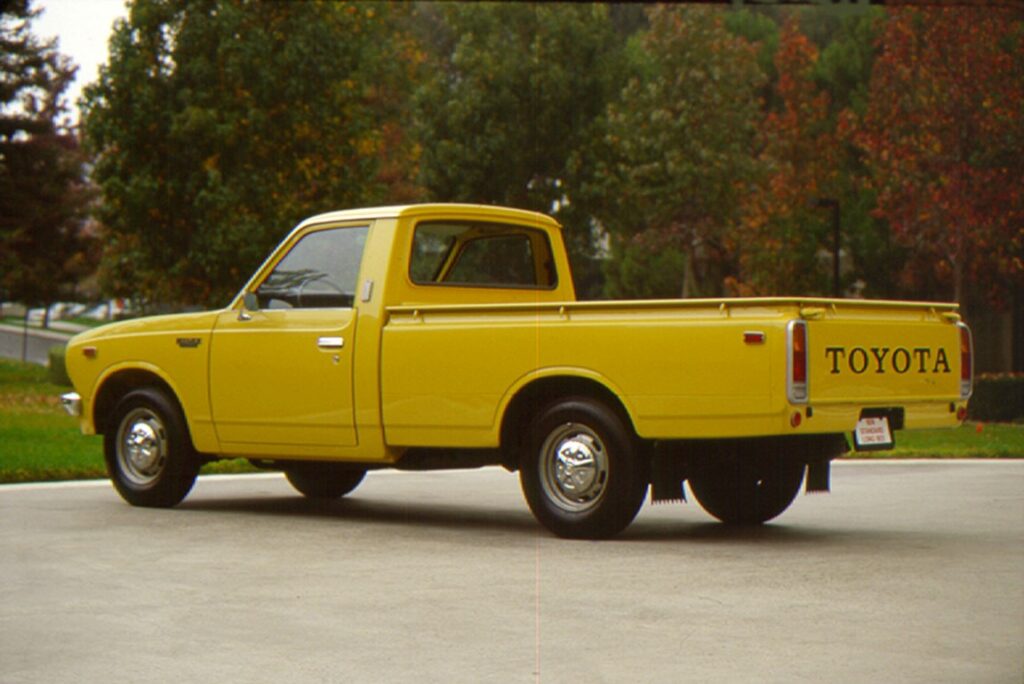
Fourth Generation (1983-1988):
The fourth-generation Hilux was introduced in 1983.
It had a more aerodynamic design and improved fuel efficiency. The engine was upgraded to a 2.4-liter engine that produced 112 horsepower. In 1986, the Hilux was given a facelift that included new headlights, taillights, and a new front grille.
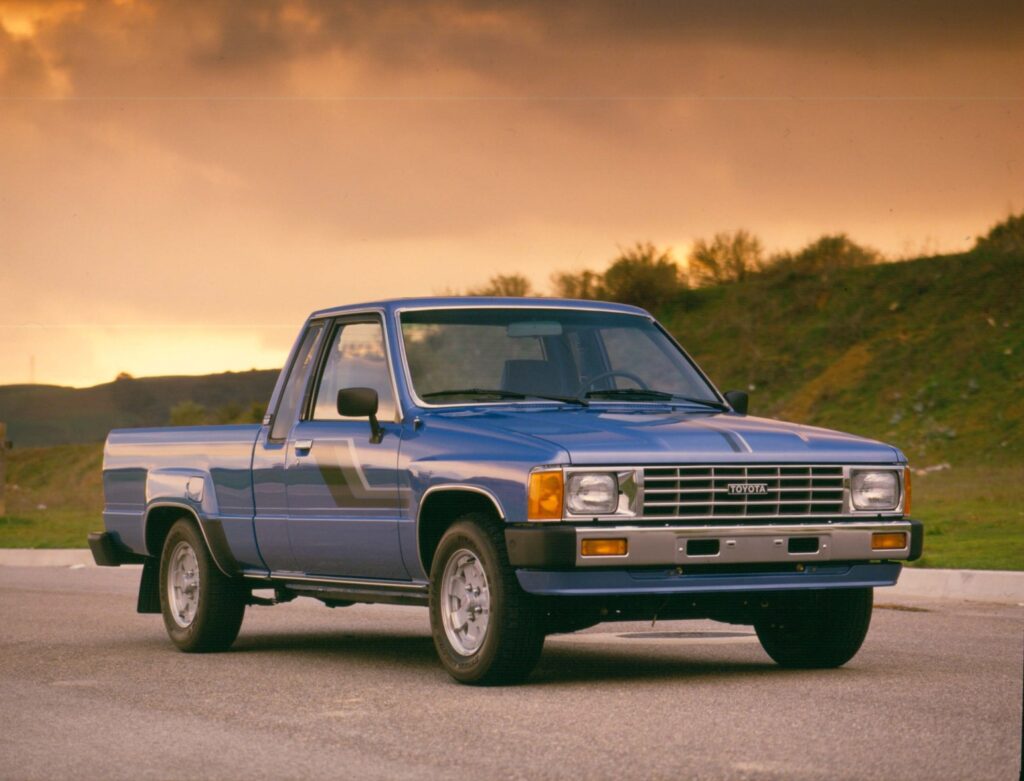
Fifth Generation (1988-1997):
The fifth-generation Hilux was introduced in 1988.
It had a more modern design with a rounded body and improved aerodynamics. The engine was upgraded to a 2.4-liter engine that produced 116 horsepower. In 1993, Toyota introduced the Xtracab version of the Hilux, which had a longer wheelbase and more interior space.
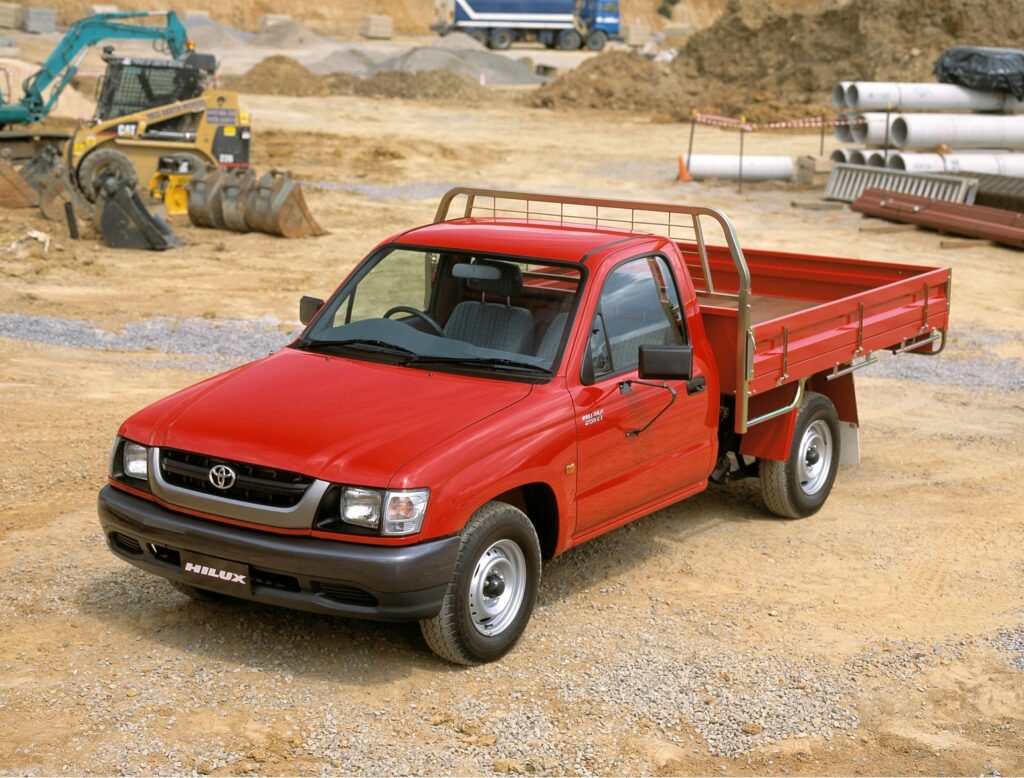
Sixth Generation (1997-2005):
The sixth-generation Hilux was introduced in 1997.
It had a more aggressive design and was available with four-wheel drive. The engine was upgraded to a 2.7-liter engine that produced 150 horsepower. In 2001, Toyota introduced the Double Cab version of the Hilux, which had four full-size doors and a more spacious interior.
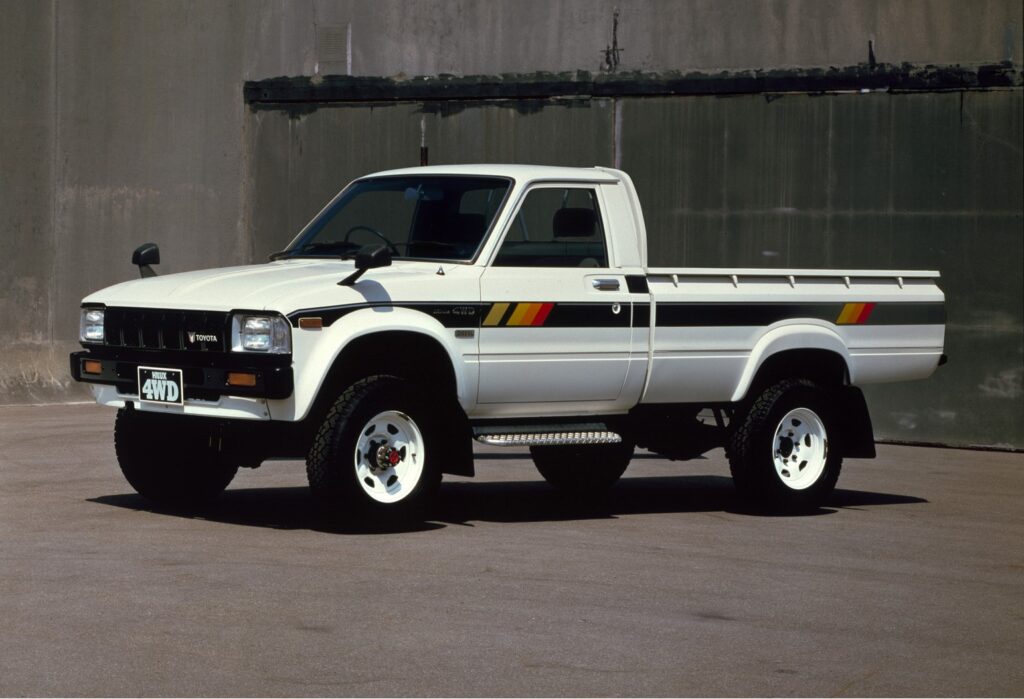
Seventh Generation (2005-2015):
The seventh-generation Hilux was introduced in 2005.
It had a more modern design with a larger and more spacious interior. The engine was upgraded to a 3.0-liter engine that produced 171 horsepower. In 2011, the Hilux underwent a facelift that included a new front grille and headlights.
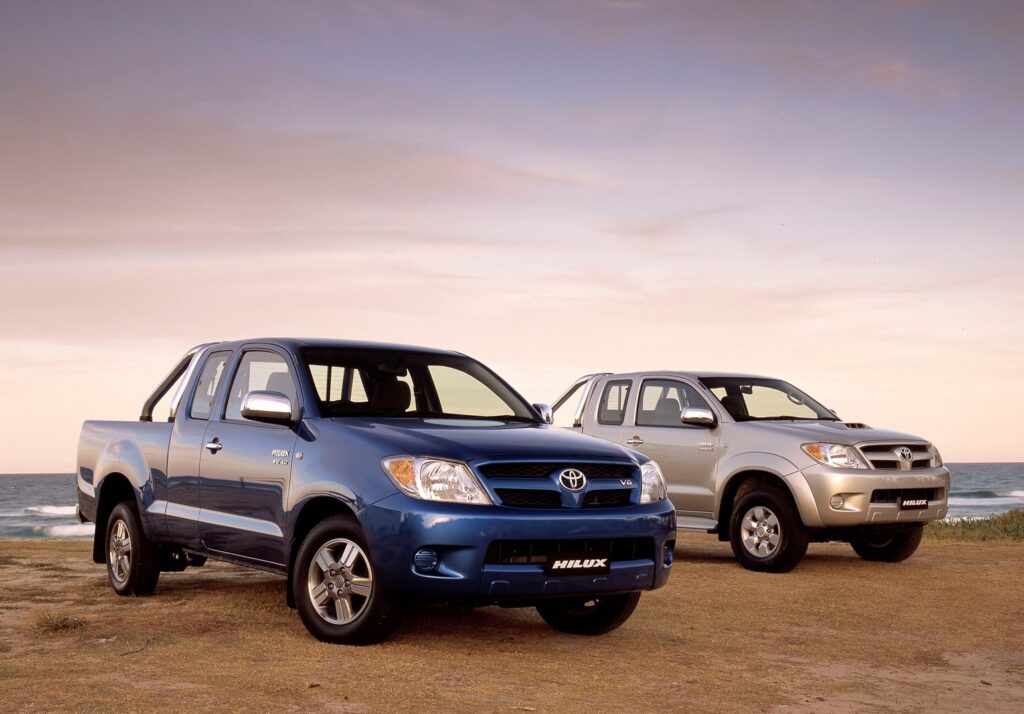
Eighth Generation (2015-present):
The eighth-generation Hilux was introduced in 2015.
It has a more modern and aggressive design with improved off-road capabilities. The engine is available in either a 2.4-liter or 2.8-liter diesel engine that produces up to 201 horsepower. The latest Hilux features advanced safety features such as anti-lock brakes, electronic stability control, and traction control.
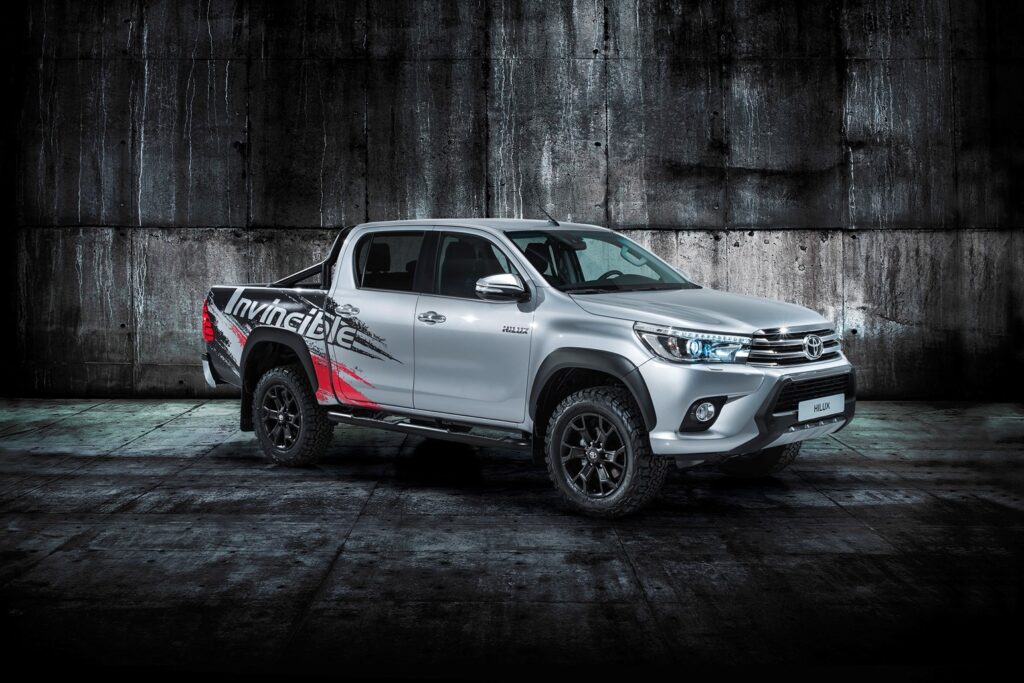
Overall, the Toyota Hilux has been a popular and reliable compact pickup truck throughout its history.
With each new generation, the Hilux has undergone significant improvements in performance, comfort,
and safety features, making it one of the most versatile and capable pickup trucks on the market, and is always a contender of the most popular cars in Kenya, and with good reason.

